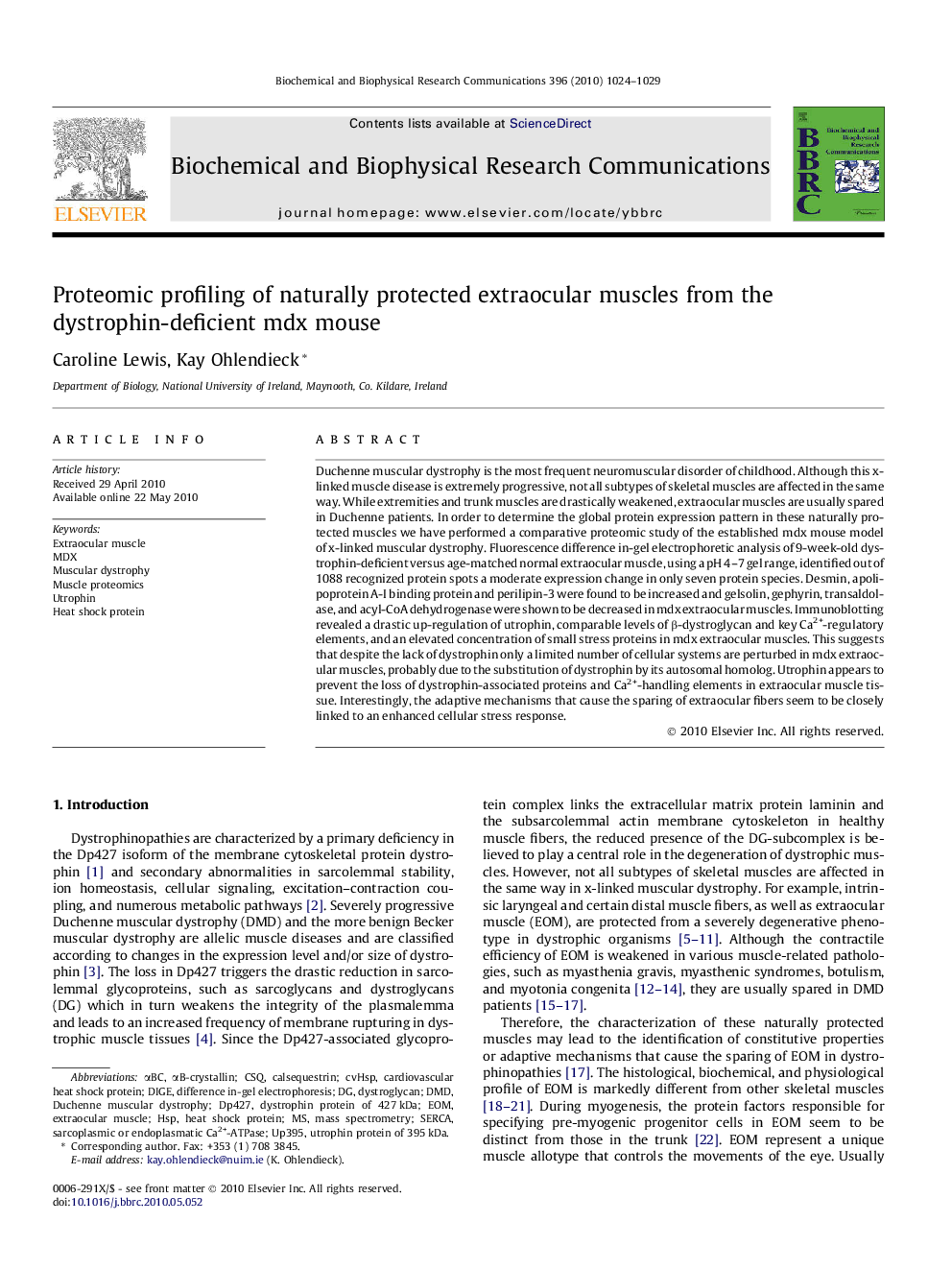| کد مقاله | کد نشریه | سال انتشار | مقاله انگلیسی | نسخه تمام متن |
|---|---|---|---|---|
| 1932072 | 1050572 | 2010 | 6 صفحه PDF | دانلود رایگان |

Duchenne muscular dystrophy is the most frequent neuromuscular disorder of childhood. Although this x-linked muscle disease is extremely progressive, not all subtypes of skeletal muscles are affected in the same way. While extremities and trunk muscles are drastically weakened, extraocular muscles are usually spared in Duchenne patients. In order to determine the global protein expression pattern in these naturally protected muscles we have performed a comparative proteomic study of the established mdx mouse model of x-linked muscular dystrophy. Fluorescence difference in-gel electrophoretic analysis of 9-week-old dystrophin-deficient versus age-matched normal extraocular muscle, using a pH 4–7 gel range, identified out of 1088 recognized protein spots a moderate expression change in only seven protein species. Desmin, apolipoprotein A-I binding protein and perilipin-3 were found to be increased and gelsolin, gephyrin, transaldolase, and acyl-CoA dehydrogenase were shown to be decreased in mdx extraocular muscles. Immunoblotting revealed a drastic up-regulation of utrophin, comparable levels of β-dystroglycan and key Ca2+-regulatory elements, and an elevated concentration of small stress proteins in mdx extraocular muscles. This suggests that despite the lack of dystrophin only a limited number of cellular systems are perturbed in mdx extraocular muscles, probably due to the substitution of dystrophin by its autosomal homolog. Utrophin appears to prevent the loss of dystrophin-associated proteins and Ca2+-handling elements in extraocular muscle tissue. Interestingly, the adaptive mechanisms that cause the sparing of extraocular fibers seem to be closely linked to an enhanced cellular stress response.
Journal: Biochemical and Biophysical Research Communications - Volume 396, Issue 4, 11 June 2010, Pages 1024–1029